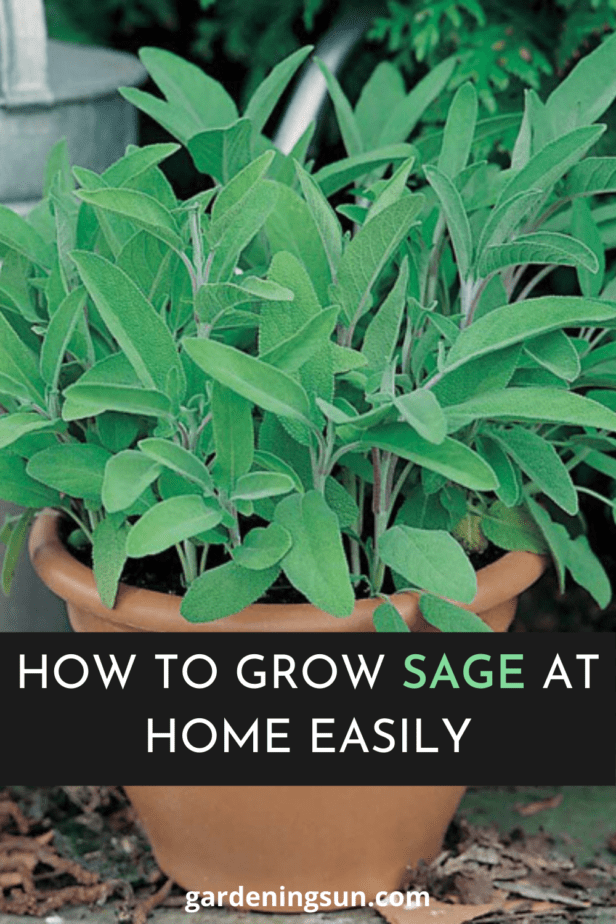Garden sage is easy to grow—and a wonderful culinary herb that flavors meat and bean dishes.
Sage (Salvia officinalis) is commonly used in poultry dishes and stuffing, especially during the winter holidays. Those living in cold climates may think dried sage is the only option. Perhaps you’ve wondered, “Can sage be grown indoors?” The answer is yes, growing sage indoors during winter months is possible. Proper care of potted sage herbs indoors provides ample leaves of this distinct herb to use fresh in holiday meals.
About Sage

A member of the mint family, culinary sage (Salvia officinalis) is a highly aromatic herb with a subtle, earthy flavor. It works especially well with meats such as pork, lamb, and poultry, and is often used in dressings or holiday stuffings. Use sparingly, as sage can be very strong and easily overpower a dish.
Sage is highly regarded as a medicinal herb and has been used for years to cure a long list of ailments from broken bones and wounds to stomach disorders, shortness of breath, and loss of memory. Pliny the Elder (23 – 79 AD), a Roman naturalist and philosopher, recommended using sage for intestinal worms, memory problems, and snake bites.
Sage is attractive with grayish-green foliage and beautiful purple-pink blossoms. It is equally at homegrown outdoors in garden beds or indoors in containers. We recommend planting this hardy perennial with other Mediterranean herbs, like basil and rosemary, for a delicious and fragrant kitchen garden. Sturdy plants — 12 to 30 inches high — are perennial in zones 5-10.
How To Plant, Grow & Harvest Sage?
If you live in zones 5 to 8, your sage will grow as a hardy perennial. However, in the humid climates of zones 9 and farther south, sage is usually an annual, as it does not easily tolerate summer heat and humidity. Choose a sunny spot in well-drained soil with a pH between 6.5 and 7.
Sage needs six to eight hours of full sun daily. If your sunny window does not provide this much daily sun, use fluorescent lighting when growing sage indoors. A double fluorescent tube mounted under a countertop, without cabinets underneath, can provide the perfect spot for sage in containers. For every hour of sunlight required, give growing sage indoors two hours under the light. Place the potted herb at least 5 inches from the light, but no further away than 15 inches. If artificial light alone is used when growing sage in containers, give it 14 to 16 hours daily.
As part of your care of potted sage herbs, you will need to keep the plants in a warm area, away from drafts, in temperatures around 70 F. Provide humidity when growing sage indoors, with a nearby pebble tray or humidifier. Including other herbs in containers nearby will also help. Water as needed, letting the top inch of soil dry out between waterings.
Harvest and Storage
In areas in which it is perennial, harvest sage only lightly during the first year. In subsequent years, harvest sage as you need it, year-round. Cut an entire stem if desired, or just pinch a leaf at a time. To give new foliage time to fully mature, leave 2 months between your last big harvest and the first frost of the season. Dry harvested sage by hanging bunches of stems upside-down. Strip the dry leaves from the stem and store in an airtight container. Keep the flowers on the stems to cultivate pretty pods that work well in dried herb arrangements.
Pests & Disease Problems
Slugs and spider mites are a few of the common garden pests found on sage. Watch closely and take the following common sense, least-toxic approach to pest control:
- Remove weeds and other garden debris to eliminate alternate hosts.
- Discard severely infested plants by securely bagging and putting in the trash.
- Release commercially available beneficial insects to attack and destroy insect pests.
- Spot treat pest problem areas with diatomaceous earth, neem oil, or other organic pesticides.
Foliage is susceptible to fungal diseases, such as powdery mildew and verticillium wilt, which can disfigure the leaves under severe infestations. To reduce these plant problems:
- Avoid overhead watering whenever possible (use soaker hoses or drip irrigation)
- Properly space plants to improve air circulation
- Apply copper or sulfur sprays to prevent further infection

